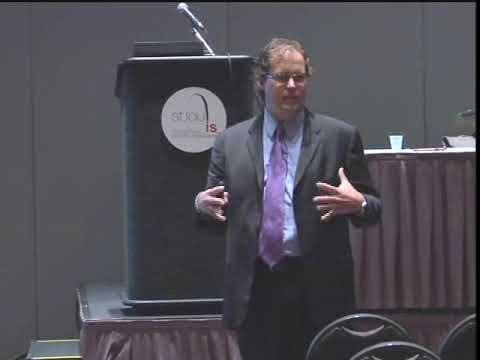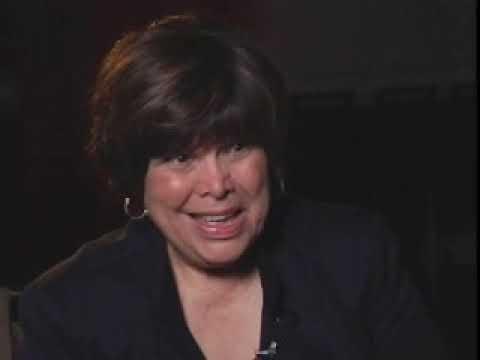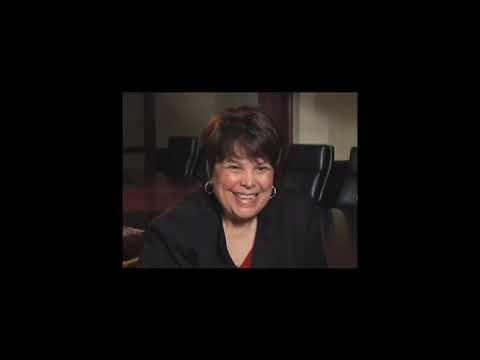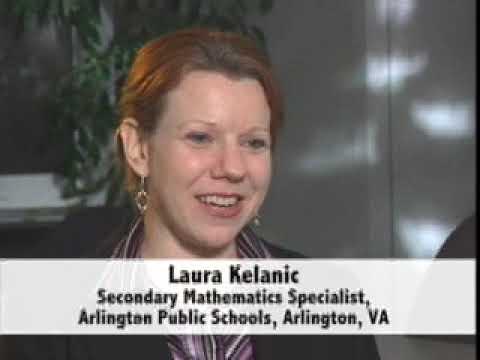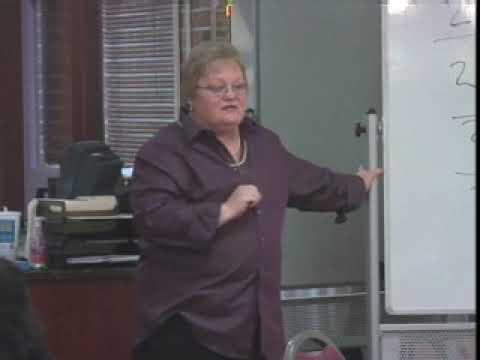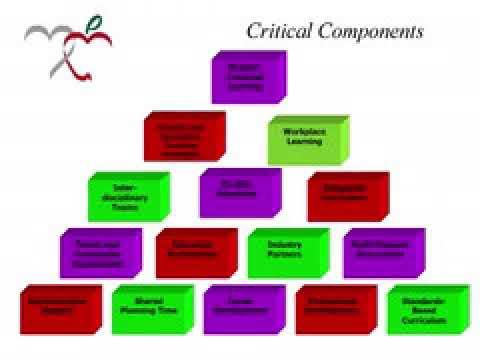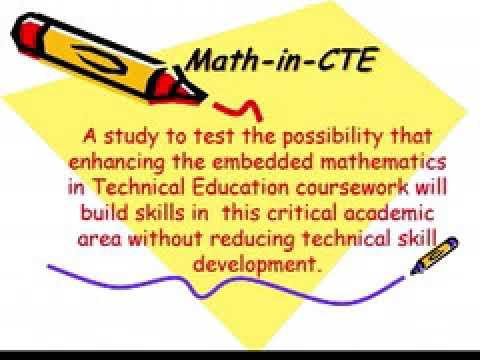NRCCTE Math-in-CTE Resources
Math-in-CTE Resources
The NRCCTE has moved the compelling results of its scientifically based research study of Math-in-CTE into classroom practice with the Math-in-CTE curriculum integration professional development model.
In the original Math-in-CTE research study, students in the classrooms of teachers trained in the model performed significantly better on standardized math tests and community college math placement tests than students who received the regular CTE curriculum. Students also improved their math skills without losing the technical skills needed for college and career readiness.
Math-in-CTE is not a curriculum but a process through which the math that naturally occurs in the CTE curriculum is enhanced. CTE teachers are never asked to replace what they already teach or to superimpose math that does not belong in their courses.
A full implementation of Math-in-CTE involves year-long work with state or district leadership teams; expert NRCCTE facilitators provide teachers with extended, intensive professional development and work directly with site leadership teams to build their capacity to lead and expand the model. During the process, CTE teachers work with math teacher partners in professional learning communities to interrogate their curricula and identify the intersection of CTE and math concepts. This work leads to the development of curriculum maps, from which teachers then create math-enhanced CTE lessons using a seven-element pedagogic framework and develop a plan for integrating those lessons naturally into their courses. Between workshops, CTE teachers meet regularly with their math teacher partners as they prepare to teach lessons.
Learn more about Math-in-CTE professional development by contacting james.stone@sreb.org
Architecture and Construction: Stair Construction
Lesson Plans
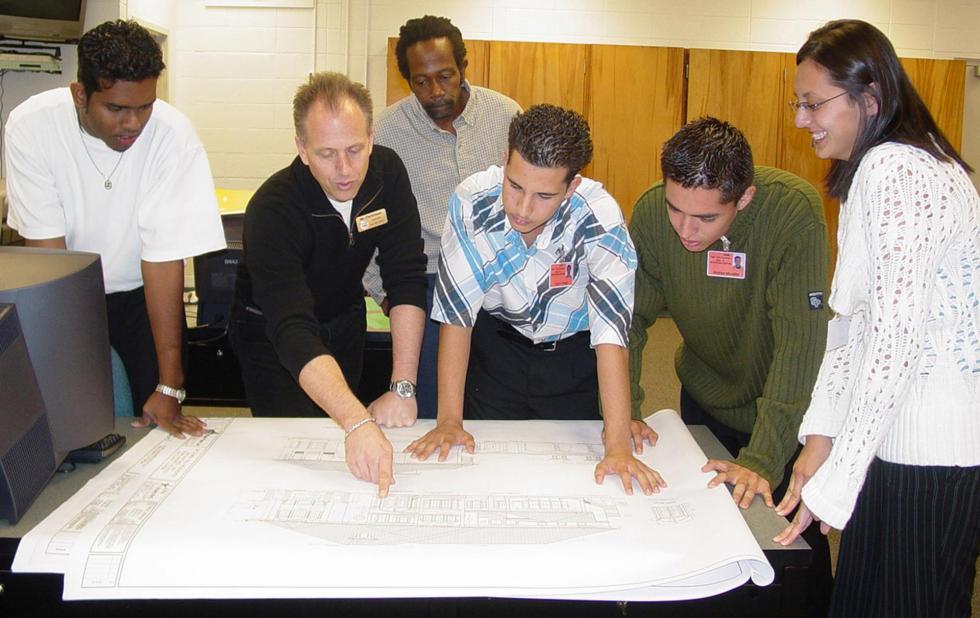 Stair
Construction is a sample Architecture and
Construction lesson created by a CTE and math teacher team from
Colorado. The lesson’s objective is to prepare students to design
a stair layout and then build a set of stairs using the
constraints for building projects within the architecture and
construction field. The CTE concept taught in this lesson is
stair layout and construction. Math concepts include measurement,
slope, estimation, and tolerances.
Stair
Construction is a sample Architecture and
Construction lesson created by a CTE and math teacher team from
Colorado. The lesson’s objective is to prepare students to design
a stair layout and then build a set of stairs using the
constraints for building projects within the architecture and
construction field. The CTE concept taught in this lesson is
stair layout and construction. Math concepts include measurement,
slope, estimation, and tolerances.
- Curriculum Map: Architecture and Construction (PDF)
- Lesson Plan: Stair Construction (PDF)
- Stair Terminology Worksheet (PDF)
- Stair Terminology Worksheet – Stair Layout Code Essentials (PDF)
- Assessment 1: Job Site Stairs (PDF)
- Stair Layout Worksheet (PDF)
- Stair Layout Worksheet Answer Key (PDF)
- Read more
Business Management and Administration: Compound Interest – A Millionaire’s Best Friend
Lesson Plans
 Compound Interest – A
Millionaire’s Best Friend is a sample Business
lesson created by a CTE and math teacher team from Missouri. The
lesson’s objective is help students understand the effects of
compound interest over time by comparing a variety of investments
and calculating compound interest using various rates of return.
The CTE concepts taught in this lesson are compound interest,
types of investments, opportunity cost, and diversification. Math
concepts include percentages, ratio, comparing, exponential
functions, graphing, rounding, order of operations, estimating,
formulas, and charting.
Compound Interest – A
Millionaire’s Best Friend is a sample Business
lesson created by a CTE and math teacher team from Missouri. The
lesson’s objective is help students understand the effects of
compound interest over time by comparing a variety of investments
and calculating compound interest using various rates of return.
The CTE concepts taught in this lesson are compound interest,
types of investments, opportunity cost, and diversification. Math
concepts include percentages, ratio, comparing, exponential
functions, graphing, rounding, order of operations, estimating,
formulas, and charting.
- Curriculum Map: Business Management and Administration (PDF)
- Lesson Plan: Compound Interest – A Millionaire’s Best Friend (PDF)
- Charts for Compound Interest – A Millionaire’s Best Friend (PDF)
- Picture and Exercise for Compound Interest – A Millionaire’s Best Friend (PDF)
- Investment Spectrum Table Worksheet (PDF)
- Investment Spectrum Table Worksheet Key (PDF)
- Investment Spectrum Table Worksheet Scrap (PDF)
- Read more
Finance: Double Declining Depreciation
Lesson Plans
 Double Declining
Depreciation is a sample Finance lesson plan created by
a CTE and math teacher team from Iowa. The lesson’s objective is
to help Finance or Business students understand how to calculate
depreciation expense and book value using double declining
balance methods of depreciation and comparing to straight line.
Math concepts include formulas, decimals, percents, exponential
decay and linear relationships.
Double Declining
Depreciation is a sample Finance lesson plan created by
a CTE and math teacher team from Iowa. The lesson’s objective is
to help Finance or Business students understand how to calculate
depreciation expense and book value using double declining
balance methods of depreciation and comparing to straight line.
Math concepts include formulas, decimals, percents, exponential
decay and linear relationships.
- Finance Curriculum Map (PDF)
- Finance Lesson Plan (PDF)
- Double Depreciation PowerPoint Presentation (PDF)
- Depreciation Spreadsheet (PDF)
- Double Declining Depreciation Worksheet (PDF)
- Guided Practice Worksheet (PDF)
- Double Declining Depreciation Pretest (PDF)
- Double Declining Depreciation Posttest (PDF)
- Double Declining Depreciation Pretest / Posttest Key (PDF)
- Read more
Health Science: Back to Basics
Lesson Plans
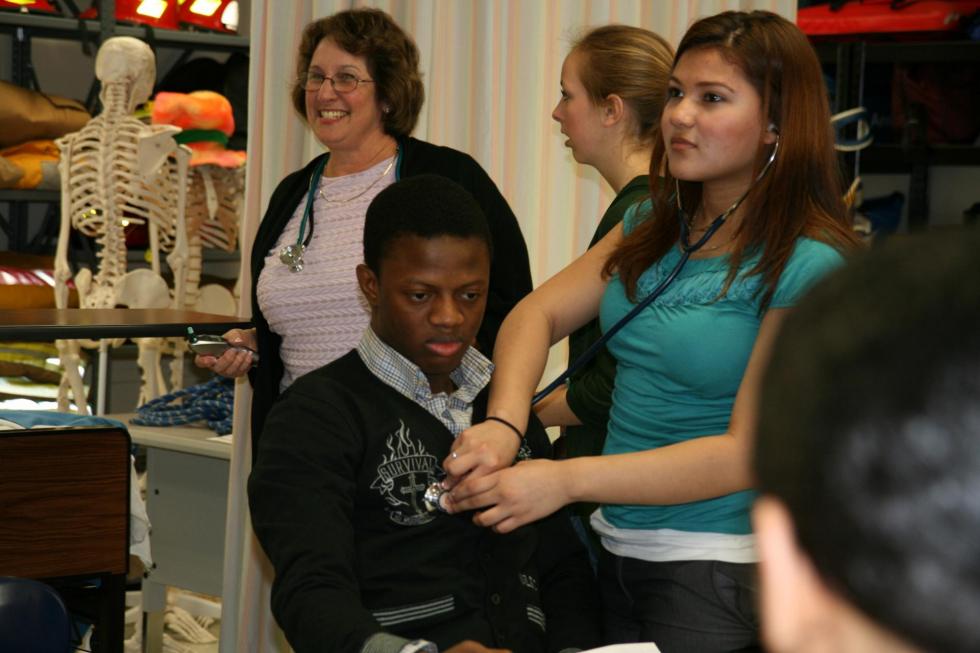 Back to Basics is
a sample Health Science lesson created by a CTE and math teacher
team from Missouri. The lesson’s objective is to teach students
how to make conversions between metric and U.S. standard
measurements and the apothecary system of measurements used in
the healthcare field. The CTE concept taught in this lesson is
medical math—in particular, unit conversions. Math concepts
include unit conversions, ratios, proportions, and exponents.
Back to Basics is
a sample Health Science lesson created by a CTE and math teacher
team from Missouri. The lesson’s objective is to teach students
how to make conversions between metric and U.S. standard
measurements and the apothecary system of measurements used in
the healthcare field. The CTE concept taught in this lesson is
medical math—in particular, unit conversions. Math concepts
include unit conversions, ratios, proportions, and exponents.
Hospitality and Tourism 1: Safety and Sanitation
Lesson Plans
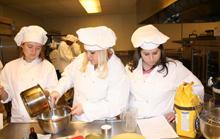 Safety and
Sanitation is a sample Hospitality and Tourism
(Culinary) lesson created by a CTE and math teacher team from
Detroit, MI. The lesson’s objective is to help students develop
an understanding of bacterial growth and the effect different
temperatures have on bacteria. The CTE concepts taught in this
lesson are safety and sanitation. Math concepts include tables,
graphs, growth rate (exponential growth), and patterns.
Safety and
Sanitation is a sample Hospitality and Tourism
(Culinary) lesson created by a CTE and math teacher team from
Detroit, MI. The lesson’s objective is to help students develop
an understanding of bacterial growth and the effect different
temperatures have on bacteria. The CTE concepts taught in this
lesson are safety and sanitation. Math concepts include tables,
graphs, growth rate (exponential growth), and patterns.
Hospitality and Tourism 2: Costing
Lesson Plans
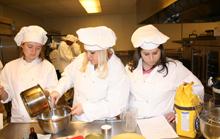 Costing is a
sample Hospitality and Tourism (Culinary/ProStart) lesson created
by a CTE and math teacher team from Utah. The lesson’s objective
is to teach students to accurately find cost per serving and use
this serving cost to determine a menu price. The CTE concepts
taught in this lesson are cost per serving and menu prices. Math
concepts include addition, division, and percentages.
Costing is a
sample Hospitality and Tourism (Culinary/ProStart) lesson created
by a CTE and math teacher team from Utah. The lesson’s objective
is to teach students to accurately find cost per serving and use
this serving cost to determine a menu price. The CTE concepts
taught in this lesson are cost per serving and menu prices. Math
concepts include addition, division, and percentages.
Hospitality and Tourism: Salads
Lesson Plans
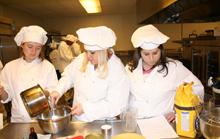 Salads is a sample
Hospitality and Tourism (Culinary/FACS) lesson created by a CTE
and math teacher team from Utah. The lesson’s objective is to
teach students to create an aesthetically pleasing salad and
prepare a vinaigrette dressing that uses the correct vinegar to
oil ratio. The CTE concept taught in this lesson is how to make
salads and salad dressings. Math concepts include ratios,
percentages, fractions, and conversions.
Salads is a sample
Hospitality and Tourism (Culinary/FACS) lesson created by a CTE
and math teacher team from Utah. The lesson’s objective is to
teach students to create an aesthetically pleasing salad and
prepare a vinaigrette dressing that uses the correct vinegar to
oil ratio. The CTE concept taught in this lesson is how to make
salads and salad dressings. Math concepts include ratios,
percentages, fractions, and conversions.
Information Technology: Photoshop Scale
Lesson Plans
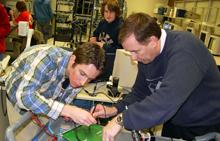 Photoshop Scale is
a sample Information Technology lesson created by a CTE and math
teacher team from Iowa. The lesson’s objective is to help
students resize an image into given parameters without distorting
the image. The CTE concept taught in this lesson is image
resizing. Math concepts include ratio, proportion, scale, and
equivalent fractions.
Photoshop Scale is
a sample Information Technology lesson created by a CTE and math
teacher team from Iowa. The lesson’s objective is to help
students resize an image into given parameters without distorting
the image. The CTE concept taught in this lesson is image
resizing. Math concepts include ratio, proportion, scale, and
equivalent fractions.
- Curriculum Map: Information Technology (PDF)
- Lesson Plan: Photoshop Scale (PDF)
- Introductory PowerPoint Presentation (PDF)
- Ratios and Proportions PowerPoint Presentation (PDF)
- Image Resizing Math Problem PowerPoint Presentation (PDF)
- Resize the Images Proportionally Exercise (PDF)
- Extra Practice PowerPoint Presentation (PDF)
- Practice Solving Proportions Worksheet (PDF)
- Flashcards (PDF)
- State Postcard Assessment Project (PDF)
- Read more
Manufacturing: Gas Metal Arc Welding Shielding Gas Mix
Lesson Plans
 Gas Metal Arc Welding (GMAW)
Shielding Gas Mix is a sample lesson created by a
CTE and math teacher team from Maine. The lesson’s objective is
to prepare students to choose the proper shielding gas for a wire
and weld process. The CTE concept for this lesson is how to
choose shielding gas mixtures. Math concepts are percentages and
whole number multiplication.
Gas Metal Arc Welding (GMAW)
Shielding Gas Mix is a sample lesson created by a
CTE and math teacher team from Maine. The lesson’s objective is
to prepare students to choose the proper shielding gas for a wire
and weld process. The CTE concept for this lesson is how to
choose shielding gas mixtures. Math concepts are percentages and
whole number multiplication.
Marketing: Break-Even Point
Lesson Plans
 Break-Even
Point is a sample Marketing lesson created by a CTE
and math teacher team from Colorado. The lesson’s objective is to
teach students to identify fixed and variable costs and compute
total revenue, total costs, and the break-even point. The CTE
concepts for this lesson are fixed costs, variable costs, total
revenue, total costs, and the break-even point. Math concepts
include systems of linear equations, problem solving, table
construction, graphing, and interpretation of results.
Break-Even
Point is a sample Marketing lesson created by a CTE
and math teacher team from Colorado. The lesson’s objective is to
teach students to identify fixed and variable costs and compute
total revenue, total costs, and the break-even point. The CTE
concepts for this lesson are fixed costs, variable costs, total
revenue, total costs, and the break-even point. Math concepts
include systems of linear equations, problem solving, table
construction, graphing, and interpretation of results.
STEM: Lou-Vee Air Car
Lesson Plans
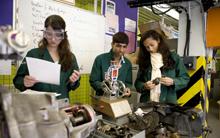 Lou-Vee-Air Car is
a sample STEM lesson created by a CTE and math teacher team from
Utah. The lesson’s objective is to teach students to identify the
correlation between the mass of a car and the acceleration the
car is experiencing and then recognize the action/reaction forces
at work. The CTE concepts taught in this lesson are about energy,
mass, and weight, including Newton’s second (force = mass *
acceleration, or F = ma) and third (action/reaction) laws of
motion. Math concepts include formulas, identification of
variables, equations, and graphing variables.
Lou-Vee-Air Car is
a sample STEM lesson created by a CTE and math teacher team from
Utah. The lesson’s objective is to teach students to identify the
correlation between the mass of a car and the acceleration the
car is experiencing and then recognize the action/reaction forces
at work. The CTE concepts taught in this lesson are about energy,
mass, and weight, including Newton’s second (force = mass *
acceleration, or F = ma) and third (action/reaction) laws of
motion. Math concepts include formulas, identification of
variables, equations, and graphing variables.
Transportation, Distribution and Logistics: Tire and Wheel Assemblies
Lesson Plans
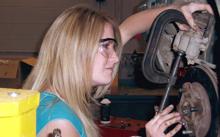 Tire and Wheel
Assemblies is a sample Transportation,
Distribution, and Logistics lesson created by an automotive and
math teacher team from Arizona. The lesson’s objective is to
prepare students to create and use formulas to calculate the
diameter of a tire and wheel assembly. The CTE concepts taught in
this lesson are tire sizes and designations. Math concepts
include creating and using formulas to solve problems, diameter,
conversions, and percent.
Tire and Wheel
Assemblies is a sample Transportation,
Distribution, and Logistics lesson created by an automotive and
math teacher team from Arizona. The lesson’s objective is to
prepare students to create and use formulas to calculate the
diameter of a tire and wheel assembly. The CTE concepts taught in
this lesson are tire sizes and designations. Math concepts
include creating and using formulas to solve problems, diameter,
conversions, and percent.
- Math-in-CTE’s seven-element pedagogic framework (PDF)
- Curriculum Map: Transportation, Distribution, and Logistics (PDF)
- Lesson Plan: Tire and Wheel Assemblies (PDF)
- Diameters of Tire and Wheel Assemblies PowerPoint Presentation (PDF)
- Worksheet A: Tire and Wheel Diameters (PDF)
- Worksheet A: Tire and Wheel Diameters - Key (PDF)
- Worksheet B: Conversions and Percents (PDF)
- Worksheet B: Conversions and Percents - Key (PDF)
- Read more
Overview: Curriculum Maps
Curriculum Maps
The Math-in-CTE professional development model is not a curriculum; instead, it is a process, organized around a set of five core principles, through which CTE and math teachers working in teams learn how to enhance the math that naturally occurs in their CTE curricula.
An Introduction to the NRCCTE
Videos
The National Research Center for Career and Technical Education provides support to the field of CTE by conducting rigorous research that is intended to improve the design and delivery of career-focused educational programs. Drawing upon our evidence-based research, we offer professional development and technical assistance to states, districts, schools, and teachers all across the country. The Math-in-CTE curriculum integration model was the first professional development model that we designed, researched, and tested. We’ve now added Literacy-in-CTE and Science-in-CTE to our professional development portfolio.
Maximizing the Academics in CTE: The NRCCTE Curriculum Integration Studies
Videos
The NRCCTE has conducted three research studies in CTE-academics integration: Math-in-CTE; Authentic Literacy-in-CTE; and most recently, Science-in-CTE. This video outlines the outcomes of these studies as well as the practical aspects of implementing models of curriculum integration.
Math-in-CTE Sample Lesson: Information Technology
Videos
In response to hundreds of requests from CTE educators and school administrators across the United States for more information about its Math-in-CTE curriculum integration and professional development model, the NRCCTE developed a series of videos about the model.
In this video, teachers Jeffrey Elkner and Isaac Zawolo (Arlington Career Center, Arlington, VA) lead their students through a lesson that unites the use of Scratch with an understanding of how to plot points on a coordinate plane.
An Introduction to the Math-in-CTE Curriculum Integration Model
Videos
In response to hundreds of requests from CTE educators and school administrators across the United States for more information about its Math-in-CTE curriculum integration and professional development model, the NRCCTE developed a series of videos about the model.
This video, filmed in Arlington, VA, Detroit, MI, and Eugene, OR, introduces the origins, structure, and benefits of the Math-in-CTE curriculum integration professional development model from the perspective of administrators, CTE and math teachers, and students implementing it in real schools.
Dr. Donna Pearson, Associate Director of the NRCCTE and a member of the research team that launched the original Math-in-CTE study, explains the structure, purpose, principles, and “seven element framework” of Math-in-CTE in the video.
Math-in-CTE at the Arlington Career Center, Arlington Public Schools
Videos
In response to hundreds of requests from CTE educators and school administrators across the United States for more information about its Math-in-CTE curriculum integration and professional development model, the NRCCTE developed a series of videos about the model.
This video offers an in-depth look at the experiences of administrators, CTE and math teachers, and students implementing Math-in-CTE at the Arlington Career Center in Arlington, VA.
Math-in-CTE Sample Lesson: Aircraft Weight and Balance
Videos
In response to hundreds of requests from CTE educators and school administrators across the United States for more information about its Math-in-CTE curriculum integration and professional development model, the NRCCTE developed a series of videos about the model.
In this video, teacher J. C. Parry (Arlington Career Center, Arlington, VA) leads his students through a lesson about the importance of calculating weight and balance in order to make sure that an airplane is safe to fly.
Math-in-CTE Sample Lesson: Cashiering
Videos
In response to hundreds of requests from CTE educators and school administrators across the United States for more information about its Math-in-CTE curriculum integration and professional development model, the NRCCTE developed a series of videos about the model.
In this video, Culinary instructor LisaJo Carleton (Breithaupt Career and Technical Center, Detroit, MI) takes her students through a lesson about the correct way to handle guest checks and make change in a restaurant, with a focus on decimals and basic math.
Professional Development to Enhance Mathematics Instruction in CTE
Videos
This is the third in a series of three webcasts about the National Research Center’s Math and Career and Technical Education (CTE) study, Building Academic Skills in Context: Testing the Value of Enhanced Math Learning in CTE Pilot Study. This webcast focuses on the professional development aspect of this study. The researchers believe that the professional development aspect of the study was one of the central factors in the success of its outcome.
Enhancing Mathematics Instruction in Career and Technical Education
Videos
This webcast on enhancing mathematics instruction in career and technical education is a direct follow-up to one presented by Dr. James Stone about the NRCCTE’s Math-in-CTE study, which tested a model for enhancing the mathematics that naturally occurs in different CTE occupational areas. In this webcast, three of the individuals who were instrumental in that study explain the model that was used and give examples from three different occupational areas.
Math in Career and Technical Education
Videos
This webcast addresses math in career and technical education. The main message of the last two decades of educational reform is that we have to expect higher performance from all of our students, including those in career and technical education. And the academic area in which most students have the most problems is mathematics. For the past two years the National Research Center at the University of Minnesota has been conducting a study that has enhanced the math instruction in traditional career and technical education curricula.
Enhanced Math in CTE
Videos
Jim Stone discusses methods for increasing the math skills of CTE students, reporting on a number of studies being conducted by the National Research Center that are based on a basic principle that virtually all educators would agree with. And that principle is that students learn better material which is relevant and useful to their lives. The NRCCTE’s studies are examining that basic principle, one in a very rigorous experimental test, to see if there is evidence which supports it.



